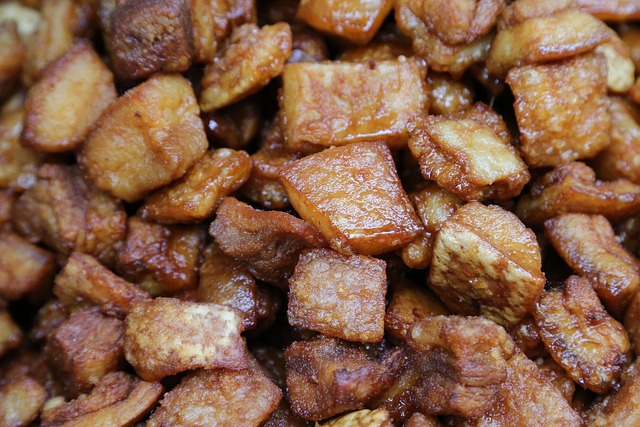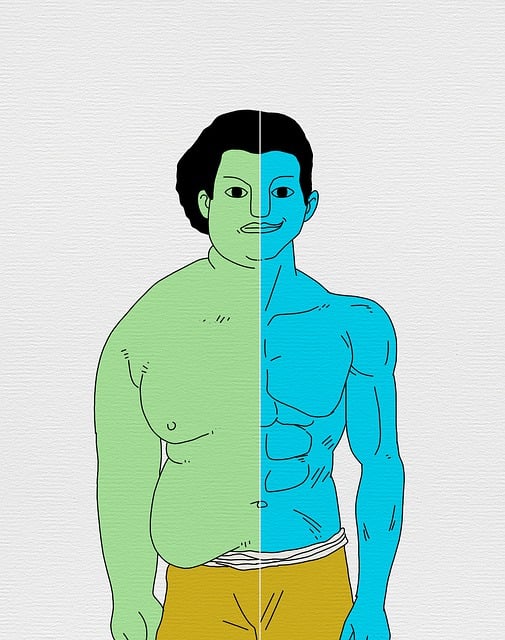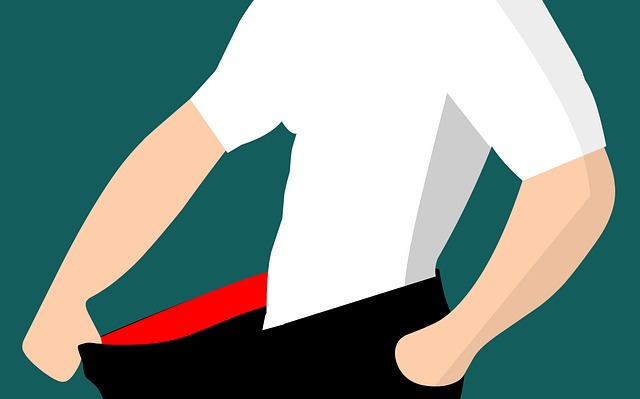Male fat reduction involves a scientific approach addressing hormonal, genetic, and lifestyle factors. It leverages thermogenesis, lipolysis, exercises, diet, and technologies like HIFEM, cryolipoly, and advanced liposuction for targeted fat removal. A holistic strategy combining nutrition and exercise is key to success. Non-invasive procedures offer safer alternatives with minimal downtime. Patient testimonials highlight real-life transformations. Proper post-treatment care ensures optimal results. Male fat reduction focuses on overall health and balanced physique, dispelling misconceptions about spot reduction.
Exploring visible results for men has never been more crucial, as the demand for effective fat reduction techniques grows. This comprehensive guide delves into male fat reduction, unveiling the science behind it and addressing common areas like belly, love handles, and thighs. From non-invasive techniques to advanced technologies like liposuction, we explore safe, effective treatments. Learn about diet, exercise, post-treatment care, and real patient testimonials. Debunk myths and discover the truth about male fat reduction for lasting results.
Understanding Male Fat Reduction: Unveiling the Science Behind It

Male fat reduction isn’t just about achieving a sculpted physique; it’s rooted in understanding how our bodies store and burn fat, influenced by hormones, genetics, and lifestyle factors. This science-backed approach targets problem areas like the midsection, arms, and chest by combining targeted exercises, dietary adjustments, and sometimes, medical interventions. It leverages key physiological processes such as thermogenesis, where certain foods and activities increase calorie burn, and lipolysis, which breaks down fat cells for energy or storage in other parts of the body.
Modern techniques like cryolipoly, high-intensity interval training (HIIT), and strategic nutrition plans play significant roles in male fat reduction. Cryolipoly freezes fat cells, causing them to break down naturally over time, while HIIT’s intense bursts of exercise stimulate metabolism and promote fat oxidation. Additionally, dietary choices that are rich in lean proteins, complex carbohydrates, and healthy fats support muscle growth and energy levels, enhancing the overall effectiveness of fat-reducing efforts.
Common Areas for Targeted Fat Loss in Men

Men often target specific areas for fat loss, aiming to achieve a more sculpted and defined physique. Common areas of focus include the abdomen, chest, and arms—all of which are visible and can be effectively addressed through targeted exercises and a balanced diet. For many men, reducing fat in these areas is a top priority, especially as it contributes to an overall healthier and more athletic appearance.
When it comes to male fat reduction, understanding that every individual’s body responds differently to fitness routines and dietary changes is key. Some may find success with intense cardiovascular workouts for burning calories, while others might focus on resistance training to build muscle and increase metabolism. A combination of both strategies often yields the best results, offering a holistic approach to achieving visible, lasting fat loss.
Non-Invasive Techniques: A Safer Approach to Male Fat Reduction

In the pursuit of achieving a slimmer and more defined physique, many men are turning to non-invasive techniques for male fat reduction. Unlike traditional surgical procedures, these modern approaches offer a safer and more comfortable alternative. One such method gaining popularity is high-intensity focused electromagnetic energy (HIFEM). HIFEM devices use targeted electromagnetic waves to stimulate muscle contractions, leading to fat cell disruption and subsequent elimination. This process can significantly reduce stubborn fat deposits without any incisions or recovery time.
The advantage of non-invasive male fat reduction lies in its ability to target specific problem areas while minimizing risks. Unlike surgical procedures that may come with scarring, bleeding, and longer recovery periods, HIFEM and similar technologies provide a virtually painless experience. This makes it an attractive option for men seeking a more subtle yet effective way to sculpt their bodies. Moreover, non-invasive techniques allow individuals to return to their daily routines immediately after the treatment, making them highly convenient.
The Role of Diet and Exercise in Complementing Treatment

In the quest for visible results, especially in male fat reduction, a holistic approach involving diet and exercise is instrumental in complementing any treatment plan. Nutrition plays a pivotal role by providing the body with essential nutrients required to support metabolic processes and overall health. A balanced diet, rich in lean proteins, whole grains, fruits, and vegetables, helps control calorie intake while ensuring optimal nutrient supply. This nutritional foundation not only aids in fat loss but also enhances recovery and overall well-being during exercise.
Regular physical activity is another key component. Incorporating cardiovascular exercises like jogging, swimming, or cycling increases heart rate, burns calories, and promotes fat oxidation. Strength training, through exercises like weightlifting, builds muscle mass, which boosts metabolism at rest. This combination of diet and exercise not only supports male fat reduction but also fosters long-term lifestyle changes that sustain results over time.
Advanced Technologies: Liposuction and Its Modern Variations

In the realm of male fat reduction, advanced technologies like liposuction have evolved significantly, offering more precise and effective solutions for targeted fat removal. Modern variations of liposuction employ innovative techniques such as ultrasound-assisted lipo and laser-driven procedures, enhancing results and minimizing downtime. These advancements are particularly beneficial for men seeking to sculpt their physique without extensive surgery.
The process typically involves using specialized equipment to break up and extract unwanted fat cells from specific areas like the abdomen, thighs, or arms. With improved technology, these treatments can be tailored to individual needs, providing visible results in less time compared to traditional methods. This modern approach ensures a more comfortable experience for patients while delivering aesthetic enhancements that boost confidence.
Minimally Invasive Procedures: Fast Recovery, Visible Results

Minimally invasive procedures are transforming the way men approach their aesthetic goals, particularly when it comes to male fat reduction. These advanced techniques offer a swift and effective solution for targeting problem areas without lengthy recovery times or significant downtime. By utilizing specialized technologies, such as ultrasound or laser treatments, medical professionals can precisely reduce stubborn fat deposits, providing visible results in just a few sessions.
One of the significant advantages is the rapid return to daily activities. Unlike traditional surgical methods, these procedures are often performed on an outpatient basis, allowing men to resume their regular routines and exercise regimens almost immediately. This fast recovery means no extended periods of discomfort or limited mobility, ensuring patients can see and feel the benefits of their treatment choices promptly.
Patient Testimonials: Real-Life Success Stories

“Patient testimonials are a powerful tool to showcase the real-life transformations achieved through male fat reduction treatments. These stories offer an authentic glimpse into the experiences and results of men who have taken the leap towards a slimmer, healthier version of themselves. Many patients share their journeys, highlighting not only the physical changes but also the boost in confidence and overall well-being they’ve gained.
From feeling self-conscious about their appearance to achieving their fitness goals, these testimonials paint a compelling picture. They serve as inspiration for others considering male fat reduction procedures, demonstrating that it’s more than just a cosmetic change—it’s a life-altering experience.”
Post-Treatment Care: Ensuring Optimal Results and Long-Term Benefits

After undergoing any non-invasive procedure like Male Fat Reduction, proper post-treatment care is essential to achieve and maintain optimal results. This includes adhering to any specific guidelines provided by your healthcare professional, such as avoiding strenuous activities or certain foods for a period after the treatment. Staying hydrated and maintaining a healthy diet can enhance recovery and improve overall outcomes. Regular check-ins with your provider allow them to monitor your progress and address any concerns promptly.
In the long term, consistent self-care practices are vital to preserving the enhanced physique. This involves regular exercise tailored to support your new body composition, as well as a balanced diet that promotes overall health and well-being. Remember, maintaining results is an ongoing commitment, and with the right care, the benefits of Male Fat Reduction can be enjoyed for years to come.
Debunking Myths: Separating Fact from Fiction in Male Fat Reduction

Many misconceptions surround the topic of male fat reduction, often clouding the facts and hindering men from achieving their fitness goals. It’s time to set the record straight and separate reality from fiction in this journey towards a healthier, slimmer body. One common myth is that only women are concerned with body shape and size, which couldn’t be further from the truth. Men too strive for a more defined, athletic physique.
Fat reduction for men isn’t just about losing weight; it’s about achieving a balanced, healthy appearance. The process involves a combination of proper diet, regular exercise, and sometimes, professional interventions. It’s crucial to understand that fat loss is not localized—the body determines where it stores and releases fat—and no specific area can be targeted without overall lifestyle adjustments. Therefore, focusing solely on spot reduction techniques is often ineffective.
